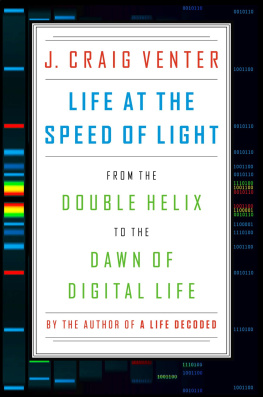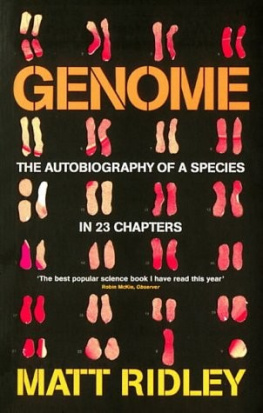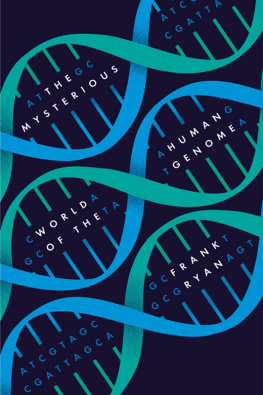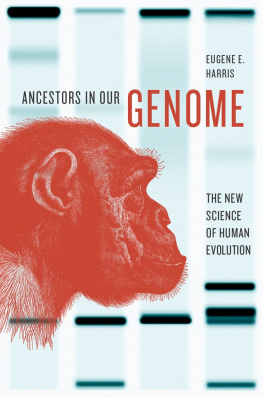Copyright
Academic Press is an imprint of Elsevier
125 London Wall, London EC2Y 5AS, United Kingdom
525 B Street, Suite 1650, San Diego, CA 92101, United States
50 Hampshire Street, 5th Floor, Cambridge, MA 02139, United States
The Boulevard, Langford Lane, Kidlington, Oxford OX5 1GB, United Kingdom
Copyright 2021 Elsevier Inc. All rights reserved.
No part of this publication may be reproduced or transmitted in any form or by any means, electronic or mechanical, including photocopying, recording, or any information storage and retrieval system, without permission in writing from the publisher. Details on how to seek permission, further information about the Publishers permissions policies and our arrangements with organizations such as the Copyright Clearance Center and the Copyright Licensing Agency, can be found at our website: www.elsevier.com/permissions.
This book and the individual contributions contained in it are protected under copyright by the Publisher (other than as may be noted herein).
Notices
Knowledge and best practice in this field are constantly changing. As new research and experience broaden our understanding, changes in research methods, professional practices, or medical treatment may become necessary.
Practitioners and researchers must always rely on their own experience and knowledge in evaluating and using any information, methods, compounds, or experiments described herein. In using such information or methods they should be mindful of their own safety and the safety of others, including parties for whom they have a professional responsibility.
To the fullest extent of the law, neither the Publisher nor the authors, contributors, or editors, assume any liability for any injury and/or damage to persons or property as a matter of products liability, negligence or otherwise, or from any use or operation of any methods, products, instructions, or ideas contained in the material herein.
Library of Congress Cataloging-in-Publication Data
A catalog record for this book is available from the Library of Congress
British Library Cataloguing-in-Publication Data
A catalogue record for this book is available from the British Library
ISBN 978-0-12-817644-3
For information on all Academic Press publications visit our website at https://www.elsevier.com/books-and-journals
Publisher: Andre Gerhard Wolff
Acquisitions Editor: Peter B. Linsley
Editorial Project Manager: Samantha Allard
Production Project Manager: Kiruthika Govindaraju
Cover Designer: Greg Harris
Typeset by SPi Global, India

Dedication
We dedicate this book to our parents, who taught us to apply logic and reason and always encouraged and inspired us to go beyond the ordinary to seek the truth.
Preface
Siddhartha Roy
Tapas K. Kundu
Interdisciplinary sciences have gradually evolved during the last century. One of the pioneers of interdisciplinary sciences was the physicist Jagadish Chandra Bose, to whom many give credit for the discovery of radio communication. In the first decades of the 20th century, he constructed novel instruments and used techniques borrowed from physics to study electrical activities in plants and many other biological phenomena. Even before that, Chemists, notably Emil Fischer, were using chemical tools to elucidate chemical structures of molecules isolated from biological systems. During the second half of the last century, the use of physical and chemical tools in life sciences became widespread. The importance of chemical tools and concepts in the life sciences became overwhelming in the current century. Chemical Biology is now becoming a pivot around which modern biology is developing.
Since the elucidation of DNA structure and the chemical nature of genes, the genome has emerged as the centerpiece of biological processes and function. It is now clear that many of the most important cellular processes are rooted in the genome. The genome has become the central focus of the study of life sciences. Breakthroughs in microscopy, omics methods, and DNA sequencing have revolutionized the study of the genome. We now realize that the extraordinary complexity of genome function is underlined by physical and chemical principles, although not yet understood in all its intricacies and nuances.
When we planned the book's content, our aim was to emphasize and underline the importance of chemical principles in the functioning of the genome to senior undergraduate or early career graduate students in Life Sciences. Thus we have recapitulated many chemical principles in the early part of the book at the cost of repeating fundamental chemistry. focuses on how these networks of genes function and drugs are being developed to intervene in these gene regulatory networks. As genome function is central to much of biology, much attention is now being given to finding drug targets against aberrant genome processes that lead to diseases, with increasing success. The final chapter is devoted to introducing the readers to this aspect of Chemical Biology.
Our aim was to write a book that would lead the uninitiated readers to a comprehensive understanding of the genome function from a chemical perspective and how a chemical understanding gives us a new platform to improve therapeutic outcomes in many disease processes. Naturally, we could not touch on all the aspects of genome function, and examples were only chosen to illustrate some of the major areas of genome science. We hope that students of life sciences would benefit from this book by nudging them toward a better appreciation of inalienable nature of Chemical Sciences and Living systems.
SR acknowledges Prof. Dhananjay Bhattacharyya, Dr. Krishnananda Chattopadhyay, Dr. Debabrata Biswas, and Dr. Abhishek Mazumder for reading parts of the manuscript and giving helpful feedback. SR acknowledges the support he received from his wife during the writing of this book, without which it would have been challenging to finish it.
TKK acknowledges Ms. Kruthi HT for drawing several figures and editorial assistance. He also acknowledges Dr. Anand P Kulkarni for preparing three figures. Last but not least, TKK acknowledges his students and postdoctoral fellows for their fundamental research contributions, used for writing some part of this book.
I: An integrative view of chemical biology
Abstract
In this chapter, we have seen that a cell is a highly organized system. This organized character begins at the bottom of the scale, where proteins, DNA, and other molecules associate to form supramolecular assemblies. At a higher level, the genome is a far more intricately organized system. However, notwithstanding its intricacies, the genome is an immaculately functioning system. Importantly, we have seen that such organizations give rise to emergent properties not found in their constituting parts. Thus the emphasis on studying biology using chemical tools and concepts must focus on the integrative character of the biological systems.
Keywords
Integrative; Emergent property; Genome organization; Intermolecular forces; Self-organization; Genome dynamics
To whatever degree we might imagine our knowledge of the properties of the several ingredients of a living body to be extended and perfected, it is certain that no mere summing up of the separate actions of those elements will ever amount to the action of the living body itself.









